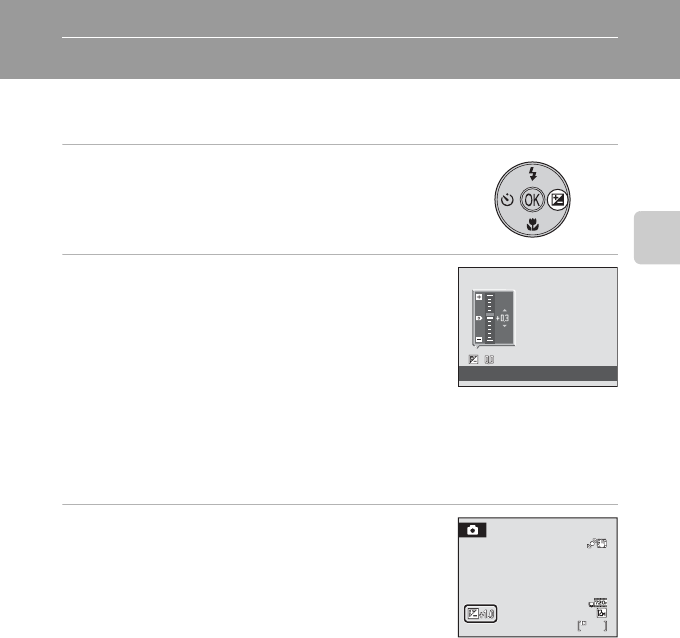
33
Basic Photography and Playback: G Easy Auto Mode
Adjusting the Brightness: Exposure Compensation
Exposure compensation is used to alter exposure from the value suggested by the
camera to make images brighter or darker.
1 Press o (exposure compensation) on the
multi selector.
• The exposure compensation guide is displayed.
2 Press the multi selector H or I to adjust the
exposure, and press k.
• To make the subject brighter, adjust the exposure
compensation to the “+” side.
• To make the subject darker, adjust the exposure
compensation to the “-” side.
• Exposure compensation can be set to values between
-2.0 and +2.0 EV.
• If a setting is not applied by pressing k within a few seconds, the selection is
cancelled.
• When set to any value other than 0.0, the value is displayed with the H icon in the
monitor.
3 Press the shutter-release button to shoot.
• To turn off exposure compensation, repeat from step 1
and set the value to 0.0, then press k.
Exposure compensation
14
14
C Exposure Compensation Value
When shooting mode is A (auto) mode (A 48), the exposure compensation setting is saved even
if the camera is turned off.
D Using Exposure Compensation
• The camera tends to reduce exposure when the frame is dominated by brightly lit objects and to
increase exposure when the frame is mostly dark. Positive compensation may therefore be
required to capture the brilliancy of very bright objects that fill the frame (for example, sunlit
expanses of water, sand, or snow) or when the background is much brighter than the main
subject.
• Negative compensation may be called for when large areas of the frame contain very dark objects
(for example, a swath of dark green leaves) or when the background is much darker than the main
subject.


















